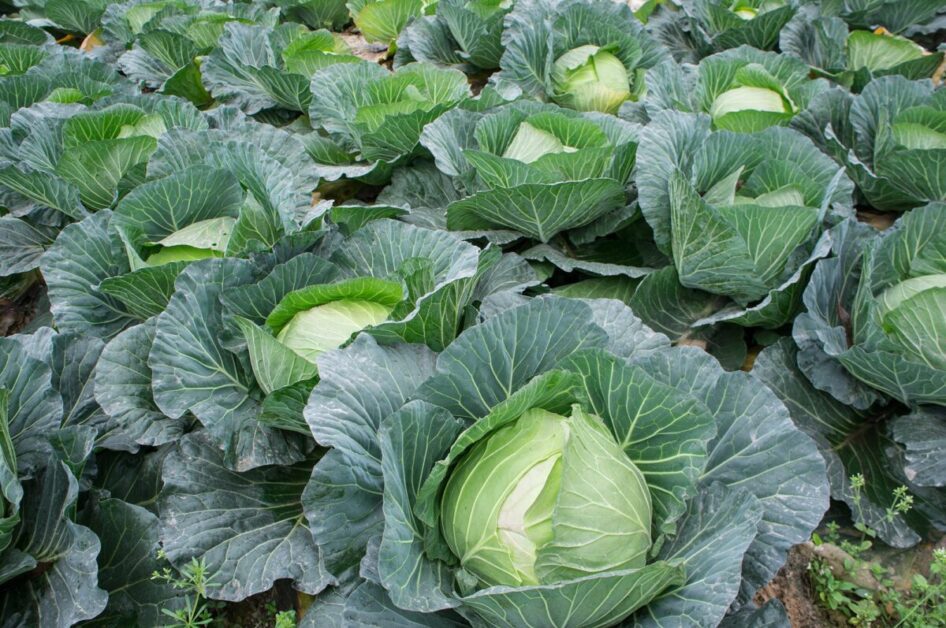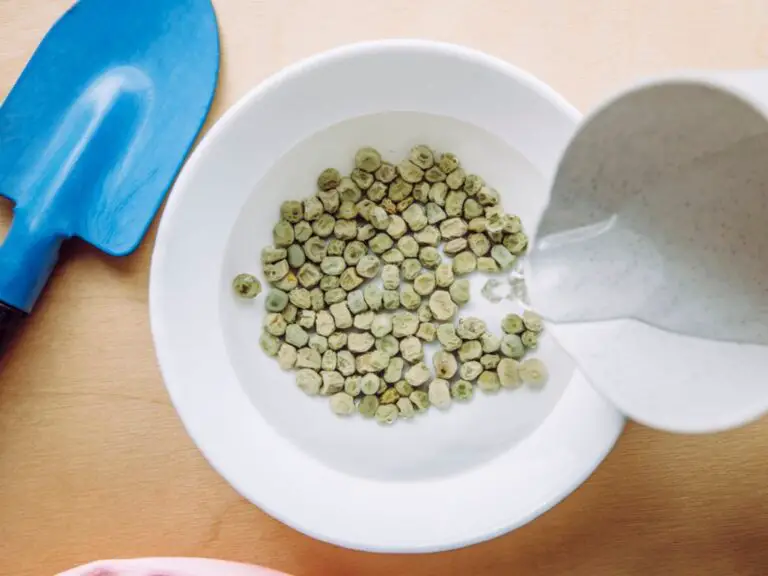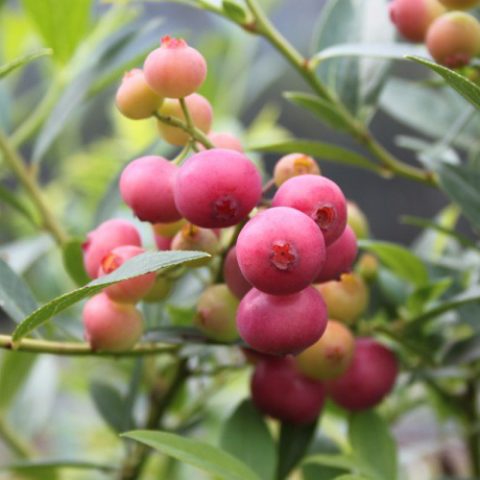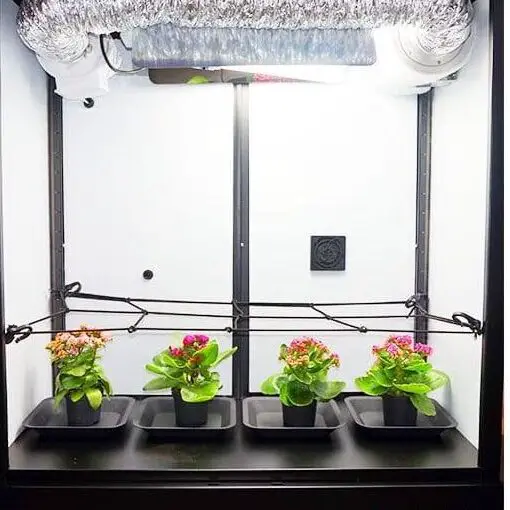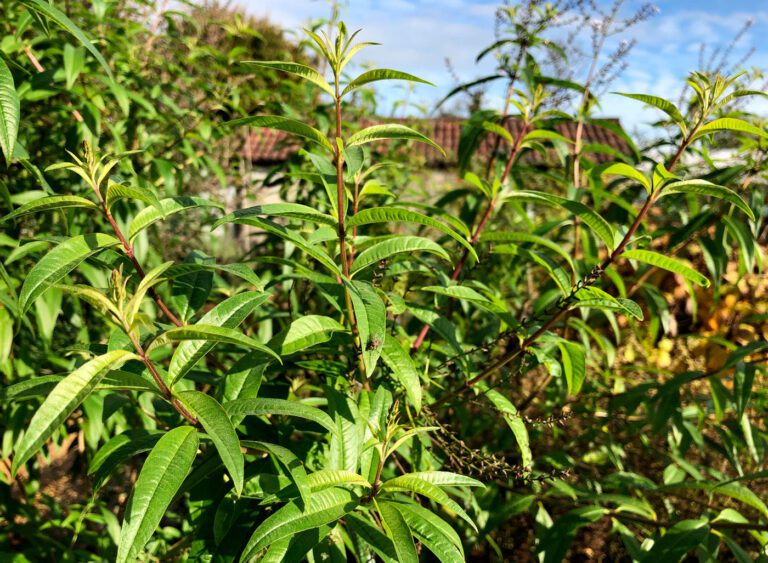21 Plants Compatible with Cabbage Cultivation
Table of Contents
1. Understanding Companion Planting for Cabbage Cultivation

Understanding companion planting is essential for successful cabbage cultivation. Companion planting involves strategically placing different plants together to benefit each other. When it comes to cabbage, companion planting can help deter pests, improve soil fertility, and enhance overall growth and health.
One common question that arises is what plants make good companions for cabbage? Several plants have been found to be beneficial when grown alongside cabbage. For instance, planting herbs such as thyme, mint, and chamomile can help repel pest insects that are known to attack cabbage. Additionally, planting legumes like peas and beans can improve cabbage growth by enriching the soil with nitrogen. These are just a few examples of the many companion plants that can be used to maximize the potential of cabbage cultivation.
2. The Benefits of Companion Planting in Cabbage Gardens
Cabbage gardens can greatly benefit from companion planting, as it offers a range of advantages for both the cabbage plants and the garden ecosystem as a whole. One of the key benefits of companion planting in cabbage gardens is pest control. By strategically incorporating certain plants that repel pest insects, cabbage growers can minimize the risk of infestations without resorting to chemical pesticides. For example, planting herbs like basil, thyme, or catnip can help deter common cabbage pests such as aphids, cabbage worms, and cabbage loopers. This natural pest control method not only protects the cabbage plants from damage but also promotes a healthier and more balanced garden environment.

In addition to pest control, companion planting in cabbage gardens can also enhance the overall health and productivity of the cabbage plants. Certain companion plants, such as legumes, have the ability to fix nitrogen in the soil. This means that they take atmospheric nitrogen and convert it into a form that can be readily absorbed by plants. By intercropping cabbage with nitrogen-fixing legumes like peas or beans, gardeners can improve the fertility of the soil and provide a valuable nutrient source for the cabbage plants. This, in turn, can result in better growth, larger heads, and higher yields of cabbage. Furthermore, certain companion plants such as alliums (garlic, onion, chives) can enhance the flavor of cabbage and help repel pests due to their strong aromatic properties.
3. Planting Herbs That Repel Pest Insects in Cabbage Gardens
Herbs have long been valued for their aromatic properties, culinary uses, and medicinal benefits. However, did you know that certain herbs can also play a crucial role in repelling pest insects in cabbage gardens? By strategically planting these pest-repelling herbs alongside your cabbage plants, you can create a natural barrier that deters unwanted pests and promotes a healthier garden ecosystem.
One such herb is the powerful marigold. Not only does marigold add a vibrant splash of color to your garden, but it also emits a scent that repels a wide range of insects, including aphids, cabbage worms, and nematodes. Planting marigold near your cabbage can provide a natural defense against these common pests, reducing the need for chemical pesticides. Additionally, the bright orange and yellow flowers of marigold attract beneficial insects such as ladybugs and lacewings, which feed on harmful garden pests. Incorporating marigold into your cabbage garden not only helps protect your plants but also enhances the overall beauty and biodiversity of your garden space.
4. Brassicas as Compatible Plants for Cabbage Cultivation
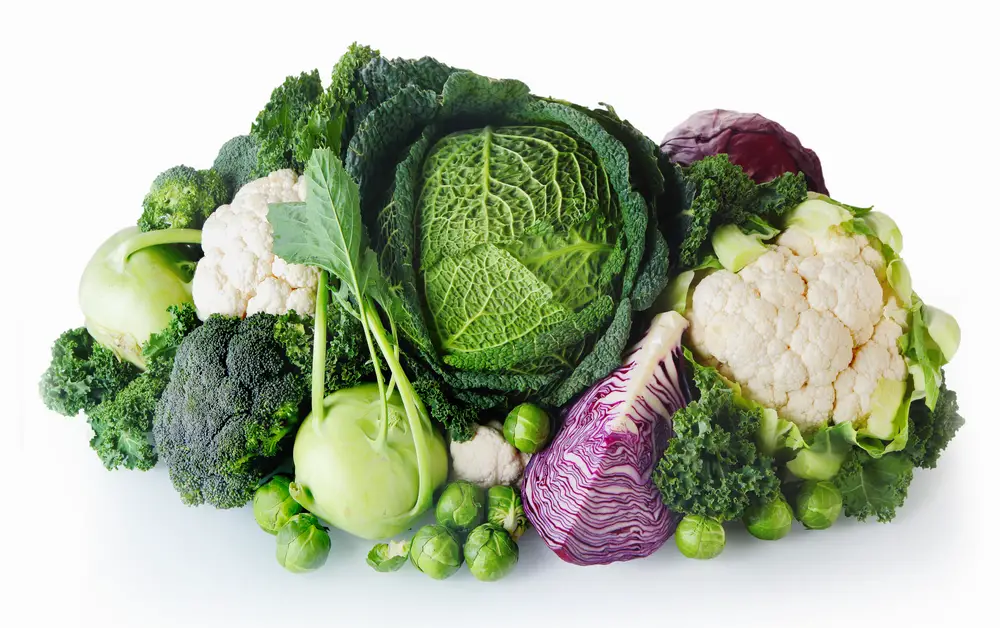
Brassicas, a family of plants that includes broccoli, kale, and cauliflower, can be excellent companions for cultivating cabbage. These plants share similar requirements in terms of soil conditions, sunlight, and water, making them compatible additions to a cabbage garden. Additionally, brassicas are known for their ability to repel certain pests that commonly afflict cabbage, such as aphids and cabbage worms. The strong odor emitted by these plants acts as a deterrent, effectively reducing the risk of infestation. As a result, interplanting cabbage with brassicas can provide a natural form of pest control, promoting healthier growth and minimizing the need for chemical interventions.
One common question that arises with regard to planting brassicas alongside cabbage is whether competition for nutrients and space might be an issue. It is true that brassicas are heavy feeders, meaning they require a significant amount of nutrients to thrive. However, given that they have similar nutritional needs, proper spacing and nutrient management can help mitigate any problems. To ensure optimal growth for both crops, it is recommended to leave enough space between cabbage and brassicas to allow for adequate air circulation and nutrient absorption. Additionally, regularly adding organic matter or compost to the soil can help replenish nutrient levels and support the overall health of the plants.
5. Legumes: Nitrogen-Fixing Plants for Improved Cabbage Growth
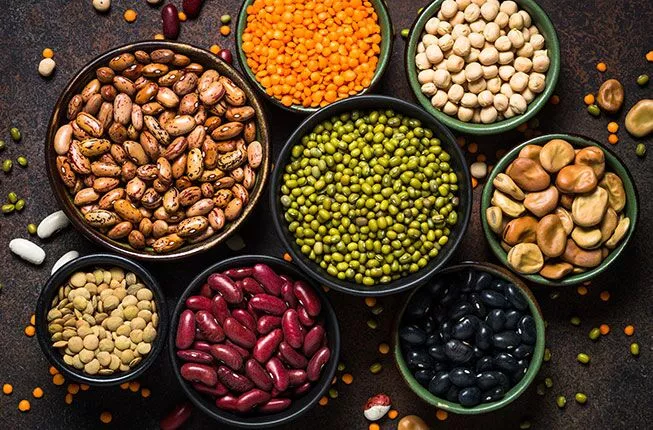
Legumes, such as peas and beans, are known for their unique ability to fix nitrogen in the soil. This natural process allows them to convert atmospheric nitrogen into a form that can be readily used by plants. For cabbage growers, incorporating legumes into their gardens can have a remarkable impact on the growth and overall health of their cabbage plants.
One frequently asked question is, how do legumes improve cabbage growth? The answer lies in the nitrogen-fixing bacteria that live in symbiosis with legume roots. These bacteria take nitrogen from the air and convert it into a form that can be absorbed by plants. When legumes are grown alongside cabbages, they enrich the soil with this valuable nutrient, providing a continuous supply of nitrogen to the cabbage plants. This additional nitrogen boosts the growth and development of the cabbages, resulting in larger, healthier heads. Additionally, legumes also help improve soil structure and fertility, making it easier for cabbage roots to penetrate and access essential nutrients.
6. Alliums: Aromatic Plants that Enhance Cabbage Flavor and Repel Pests
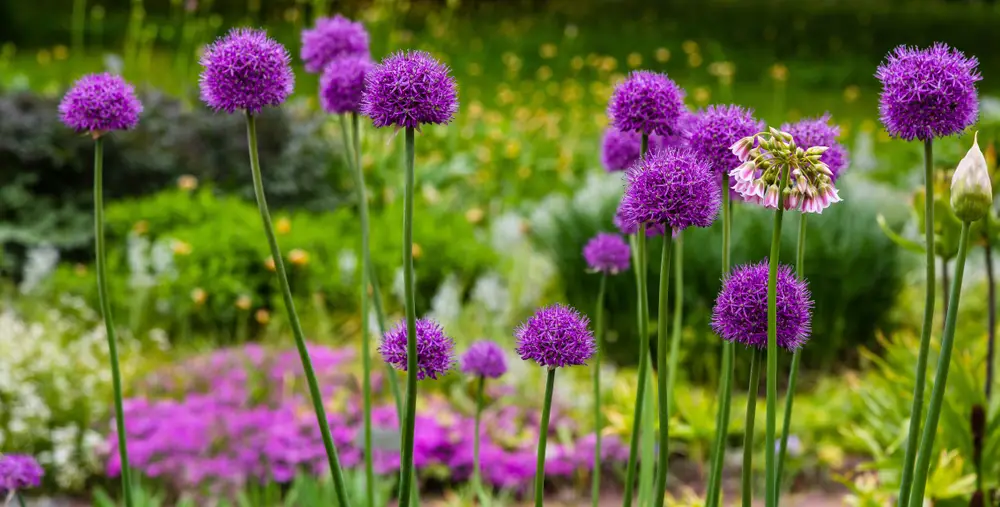
Alliums, such as onions, garlic, and chives, are not only known for their strong aroma and distinct flavor but also for their beneficial effects on cabbage plants. These aromatic plants have long been employed in companion planting to enhance the flavor of cabbage, making it more palatable and enjoyable. The pungent compounds present in alliums can penetrate the cabbage leaves, infusing them with their characteristic taste. This can be especially advantageous for those who find cabbage’s natural flavor too strong or bitter. By interplanting alliums with cabbage, gardeners can create a harmonious combination that not only enhances the overall taste but also adds variety to their culinary creations.
In addition to their flavor-enhancing properties, alliums also possess natural pest-repelling qualities that can benefit cabbage gardens. The strong scent emitted by these plants acts as a natural deterrent against common cabbage pests, such as aphids, cabbage loopers, and flea beetles. These insects are often repelled by the powerful compounds released by alliums, reducing the risk of infestation and damage to the cabbage plants. Incorporating alliums into the garden not only provides a practical solution for pest management but also ensures that the cabbage plants thrive in a protected environment.
7. Leafy Greens: Plants that Complement Cabbage in the Garden
Leafy greens, such as lettuce, spinach, and kale, are excellent companions for cabbage in the garden. These plants provide a multitude of benefits to the cabbage plants, making them a valuable addition to any cabbage garden. One of the main advantages of planting leafy greens alongside cabbage is that they help to optimize space utilization. Since cabbage plants take a while to mature, planting leafy greens in between the cabbage rows ensures that the garden bed is utilized efficiently, giving you more produce in the same space.
In addition to space utilization, leafy greens also offer pest control benefits when grown alongside cabbage. The strong aroma emitted by plants like lettuce and kale helps to confuse and deter pests, making it difficult for them to locate the cabbage plants. This can help reduce the likelihood of pest infestations and damage to your cabbage crop. Furthermore, leafy greens also act as a trap crop, drawing pests away from the cabbage plants and onto themselves. This sacrificial strategy ensures that your cabbage plants remain relatively unharmed, as the pests focus their attention on the nearby leafy greens.
8. Umbellifers: Beneficial Insects Attractants for Cabbage Gardens
Umbellifers, also known as the carrot family, can be excellent additions to a cabbage garden due to their ability to attract beneficial insects. These plants, which include dill, fennel, and parsley, produce umbrella-shaped clusters of flowers that are highly attractive to beneficial insects such as ladybugs, lacewings, and parasitic wasps. These insects play a crucial role in organic pest control as they prey on common cabbage pests like aphids, caterpillars, and mites. By incorporating umbellifers into your cabbage garden, you can create a habitat that attracts these helpful insects and helps maintain a balanced ecosystem.
One frequently asked question regarding the use of umbellifers in cabbage gardens is whether they have any negative effects on the cabbage plants themselves. While umbellifers are generally beneficial for cabbage gardens, it is important to consider the specific needs of your cabbage plants. Some gardeners have reported that certain umbelliferous plants, like dill, can have allelopathic effects on cabbage, stunting its growth or causing it to bolt prematurely. However, these effects are not widely documented, and many gardeners have successfully grown cabbage alongside umbellifers without experiencing any negative consequences. As with any companion planting, it is crucial to monitor your plants and adjust your garden plan accordingly to create the best possible environment for your cabbage crop.
9. Cabbage Companions from the Solanaceae Family
The Solanaceae family, also known as the nightshade family, consists of plants that can make excellent companions for cabbage cultivation. One such companion is the tomato plant. Tomatoes are not only visually appealing when grown alongside cabbage but can also help repel pests that commonly affect cabbage, such as aphids and cabbage worms. Additionally, the strong scent emitted by tomato plants can confuse and deter cabbage pests from finding their target plants.
Another member of the Solanaceae family that can be a beneficial companion to cabbage is the pepper plant. Peppers, especially hot chili peppers, contain capsaicin, a compound that can repel many pests. Growing peppers near cabbage can help protect the crop from pests like aphids, spider mites, and caterpillars. However, it should be noted that peppers have specific soil requirements and prefer warmer growing conditions, so it is essential to consider these factors when planning a cabbage and pepper companion planting.
10. Flowers that Attract Pollinators and Beneficial Insects to Cabbage Gardens
When it comes to attracting pollinators and beneficial insects to your cabbage gardens, planting the right flowers can make a significant difference. Flowers not only add beauty to your garden, but they also act as magnets for bees, butterflies, and other pollinators. These insects play a critical role in the pollination process, ensuring the production of healthy cabbage plants.
One popular flower choice for attracting pollinators is the marigold. Marigolds are known for their vibrant colors and strong scent, which is irresistible to bees and other beneficial insects. They also help deter pests, such as aphids and nematodes, making them a valuable addition to cabbage gardens. Other flowers that can attract pollinators and beneficial insects include cosmos, zinnias, and dahlias. By incorporating these flowers into your cabbage garden, you create a more inviting environment for pollinators and enhance the overall health and productivity of your cabbage plants.
11. Avoiding Planting Cabbage with Incompatible Plants
Many gardeners are aware of the benefits of companion planting, but it is equally important to understand which plants should not be grown together. Incompatible plants can hinder the growth and development of cabbage, leading to decreased yields and increased susceptibility to pests and diseases.
One common incompatible plant for cabbage is tomatoes. While both are popular crops in the garden, they should not be planted close to each other. This is because tomatoes and cabbage have similar nutrient needs and are susceptible to some of the same pests and diseases. By planting them too close together, you risk depleting the soil of essential nutrients and increasing the likelihood of pest infestations. Additionally, tomatoes produce a substance called solanine, which can inhibit cabbage growth. Therefore, it is best to avoid planting cabbage and tomatoes in close proximity to ensure the health and productivity of both crops.
12. Managing Plant Spacing and Intercropping in Cabbage Gardens
Intercropping and managing plant spacing are crucial aspects of successful cabbage cultivation. When it comes to intercropping, it is important to choose companion plants that are compatible with cabbage and provide mutual benefits. Some popular choices include herbs that repel pest insects, such as thyme or rosemary, which help protect cabbage from common pests like cabbage worms or aphids. Additionally, planting aromatic plants like alliums, such as garlic or onion, can enhance the flavor of cabbage while repelling pests.
Frequently Asked Questions:
1. Can I intercrop cabbage with other vegetables?
Yes, intercropping cabbage with certain vegetables can be beneficial. For example, planting leafy greens like lettuce or spinach between cabbage plants helps to optimize space and maximize yields. However, it is important to consider the growth habits and nutrient requirements of the companion plants to avoid competition for resources.
2. Do I need to maintain specific spacing between cabbage plants?
Yes, maintaining proper plant spacing is essential for healthy cabbage growth. Cabbage plants require sufficient space to develop their foliage and prevent overcrowding, which can create a favorable environment for pests and diseases. Typically, cabbage plants should be spaced around 12-18 inches apart, depending on the specific variety and its growth habit. Ensuring adequate spacing allows for proper air circulation and reduces the risk of fungal infections.
13. Using Succession Planting to Maximize Cabbage Companion Benefits
Succession planting is a technique that can greatly enhance the benefits of companion planting in cabbage gardens. By staggering the planting of different crops throughout the growing season, you can ensure a continuous supply of vegetables while maximizing the positive interactions between cabbage and its companions. This method allows for multiple rounds of planting, harvesting, and replanting, creating a dynamic and productive gardening system.
One unique FAQ that arises in relation to succession planting is the choice of companion plants for each planting cycle. It is important to consider the growth habits and requirements of the cabbage as well as its potential companions to ensure compatibility and optimal benefits. Additionally, gardeners often wonder about the optimal timing for successive plantings. This can vary depending on factors such as the specific cabbage variety, local climate, and desired harvest times. By carefully planning and coordinating the timing of successive plantings, gardeners can maximize the benefits of companion planting and enjoy a bountiful harvest throughout the growing season.
14. Integrating Cover Crops for Improved Cabbage Cultivation
Cover crops play a crucial role in improving the overall health and productivity of cabbage gardens. By integrating cover crops into your cultivation practices, you can maximize the benefits for your cabbage plants. One common cover crop option is legumes, such as clover or hairy vetch, which are nitrogen-fixing plants. These plants have the unique ability to convert atmospheric nitrogen into a form that is readily available for other plants, including cabbage. By planting legumes as cover crops, you can enhance the nitrogen content in the soil and promote healthier growth of your cabbage plants.
Another beneficial cover crop to consider is rye grass. This fast-growing grass can be sown in between cabbage rows or as a winter cover crop. Rye grass helps to prevent soil erosion, suppress weed growth, and enhance overall soil structure. Additionally, rye grass acts as a natural pest deterrent, attracting beneficial insects that feed on cabbage pests. By integrating rye grass as a cover crop, you can create a well-balanced ecosystem in your cabbage garden, ultimately leading to improved cultivation and higher yields.
Integrating cover crops into your cabbage cultivation strategy offers numerous advantages. From nitrogen fixation to pest control and soil enhancement, cover crops provide a sustainable and eco-friendly approach to nourishing your cabbage plants. By carefully selecting and incorporating the right cover crops into your garden, you can reap the benefits of improved cabbage cultivation and achieve greater success in your gardening endeavors.
15. Crop Rotation Strategies for Healthy Cabbage Plants
Crop rotation is a vital practice for maintaining healthy cabbage plants in your garden. By rotating your crops each year, you can prevent the buildup of pests and diseases that specifically target cabbage plants. This strategy involves planting cabbage in a different location within your garden each growing season, following a systematic rotation plan.
One frequently asked question when it comes to crop rotation is, “What are the best crops to rotate with cabbage?” While there are several options, it is beneficial to avoid planting cabbage in the same spot more than once in a three-year period. This allows enough time for the natural breakdown of pest and disease populations, reducing the risk of reinfestation. Successful cabbage rotation crops include legumes like peas or beans, as they fix nitrogen into the soil, leafy greens such as lettuce or spinach, and members of the onion family like garlic or shallots. By adhering to a crop rotation plan, you can foster healthy cabbage plants and enhance the overall productivity of your garden.
16. FAQs about Crop Rotation Strategies for Healthy Cabbage Plants
Q: What is crop rotation and why is it important for cabbage cultivation?
Crop rotation is the practice of systematically changing the location of crops in a field or garden over multiple growing seasons. This strategy helps to prevent the build-up of pests and diseases that specifically target cabbage plants. By rotating cabbage with other unrelated crops, such as legumes or leafy greens, the risk of pest and disease outbreaks is significantly reduced, leading to healthier, more robust cabbage plants.
Q: How often should I rotate my cabbage plants?
The frequency of crop rotation for cabbage plants can vary depending on the specific crop rotation plan and the size of your garden. In general, it is recommended to rotate cabbage plants every 2 to 3 years. This ensures that pests and diseases cannot establish themselves in the soil and reduces the need for pesticides and other chemical interventions. By implementing a regular crop rotation schedule, you can maintain the health and productivity of your cabbage plants while minimizing the impact on the environment.
What is companion planting for cabbage cultivation?
Companion planting for cabbage cultivation is the practice of growing certain plants together with cabbage to enhance its growth, deter pests, and improve overall garden health.
Why is companion planting beneficial in cabbage gardens?
Companion planting in cabbage gardens offers several benefits, such as natural pest control, increased nutrient availability, improved pollination, and enhanced flavor and aroma of cabbage.
Can herbs be planted alongside cabbage to repel pest insects?
Yes, planting herbs like basil, dill, and mint in cabbage gardens can help repel pest insects and protect cabbage plants from damage.
Are there any other plants from the brassica family that are compatible with cabbage cultivation?
Yes, other brassicas like broccoli, cauliflower, and kale are compatible plants that can be grown alongside cabbage, as they have similar growth requirements and can help deter pests.
How do legumes contribute to improved cabbage growth?
Legumes, such as beans and peas, are nitrogen-fixing plants that can help improve cabbage growth by enriching the soil with nitrogen, an essential nutrient for healthy plant development.
Can alliums be used to enhance cabbage flavor and repel pests?
Yes, alliums like onions, garlic, and chives not only enhance the flavor of cabbage but also act as natural repellents for many pests that commonly affect cabbage plants.
Are there any leafy greens that complement cabbage in the garden?
Yes, leafy greens such as lettuce, spinach, and Swiss chard can be grown alongside cabbage to maximize garden space and provide a diverse range of crops.
What are umbellifers and how do they attract beneficial insects to cabbage gardens?
Umbellifers are plants like dill, fennel, and coriander that produce umbrella-shaped flower clusters. These plants attract beneficial insects like ladybugs and lacewings, which prey on pests that harm cabbage plants.
Can cabbage be planted with other plants from the Solanaceae family?
It is generally not recommended to plant cabbage with other plants from the Solanaceae family, such as tomatoes and peppers, as they have different growth requirements and can compete for resources.
Which flowers attract pollinators and beneficial insects to cabbage gardens?
Flowers like marigolds, nasturtiums, and alyssum are known to attract pollinators like bees and butterflies, as well as beneficial insects like hoverflies, which can help with cabbage pollination and pest control.
How can one avoid planting cabbage with incompatible plants?
To avoid planting cabbage with incompatible plants, it is important to research and understand the growth requirements, pest vulnerabilities, and potential allelopathic effects of different plant species before deciding on companion planting combinations.
How should plant spacing and intercropping be managed in cabbage gardens?
Proper plant spacing and intercropping techniques should be followed in cabbage gardens to allow for adequate sunlight, air circulation, and efficient use of space. This can help minimize competition between plants and promote healthy growth.
What is succession planting and how can it maximize cabbage companion benefits?
Succession planting involves sowing new cabbage plants at regular intervals to ensure a continuous harvest. By incorporating companion plants in succession planting, you can maximize the benefits of companion planting throughout the growing season.
How can cover crops be integrated for improved cabbage cultivation?
Cover crops like clover, buckwheat, or rye can be grown in between cabbage plantings or during the off-season to improve soil fertility, suppress weeds, and prevent erosion, leading to healthier cabbage plants.
What are some crop rotation strategies for healthy cabbage plants?
Crop rotation is important to prevent the buildup of pests and diseases in cabbage gardens. By rotating cabbage plants with unrelated crops each year, you can minimize the risk of soil-borne pathogens and pests affecting your cabbage plants.

